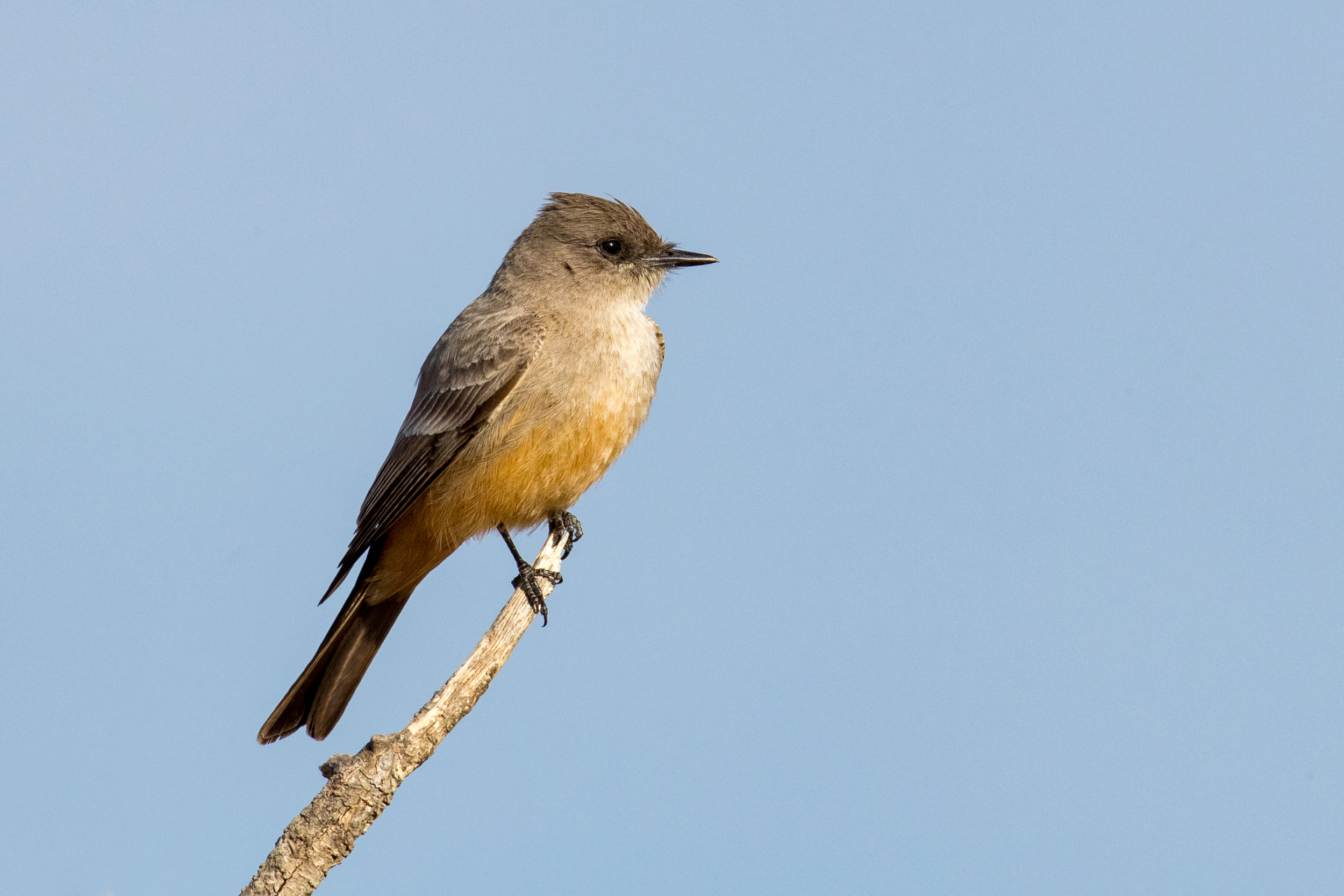Bird of the Month: Say's Phoebe
By Andy McCormick
PC: Mick Thompson (Say’s Phoebe)
Scientific Name: Sayornis saya
Length 7.5 in
Wingspan 13 in
Weight 0.74 oz
AOU Band code SAPH
Say’s Phoebe is an early migrant often arriving in Washington in late March, before any other flycatcher. It is a bird of open, dry, western country and can be seen perched on wires, boulders and fences, or simply low vegetation. Aerlal hawking from a low perch is its preferred foraging method. In short, quick flight it sallies out for bees, wasps, flies and other insects in flight. If there are not enough flying insects in the area, it will forage on the ground for smaller insects.
Dark Above, Tawny Below
It is similar in shape and behavior to the other two phoebes in the genus Sayornis, the Black Phoebe (S. nigricans) and Eastern Phoebe (S. phoebe). However, it is a bit larger. Its head is dark grayish brown, particularly around the eyes and lores. Its throat and chest are gray, and the belly and undertail coverts have been described as ranging in color from pale rufous (Sibley), to apricot (Bell), to salmon (Dunne), to tawny-cinnamon (Alderfer). Perhaps the most distinguishing physical feature of this bird is its long black tail which flairs as it pumps (Dunne), and during its foraging flights.
The genus and species names Sayornis saya honor Thomas Say (1787-1834), the Father of American Entomology, and a versatile naturalist who found 11 new (to Europeans) species of birds on a Rocky Mountain expedition along the Platte and Arkansas Rivers in 1819-20. One of the new species was Say’s Phoebe named by his friend Charles Bonaparte (Mearns and Mearns).
Special Adaptations to Dry, Open Country
Say’s Phoebe has adapted to its favored habitat of dry, semi-open terrain in farmlands, prairies, and scrubland in its relationship to water. It does not drink water directly. Its insect diet provides sufficient water. Fluids are also preserved as indigestible parts of insects are formed into a pellet which is ejected from its mouth (Schukman and Wolf). The bird is seldom seen to defecate. Nesting in hotter climates is a challenge. Say’s Phoebe likes to have a “roof” over its nest and will construct a flat, open cup made of grass, weeds, moss and spider webs usually in a crevice or cavity, under eaves of older buildings, under bridges, and sometimes in a tree.
Usually four white eggs are deposited and the female incubates them for about two weeks. Both parents feed the nestlings a diet of insects, and first flight occurs in about another two weeks (Kaufman). Say’s Phoebes often have two broods per year and their population numbers are considered stable.
A Wide-ranging Bird
Say’s Phoebe has an extensive range in Western North America from Central Mexico to the Alaskan tundra at the foot of the Brooks Range. Northern nesters migrate south in fall and overlap with year-round resident birds in the Southwestern United States and Mexico. Say’s Phoebe calls are soft, low whistles usually alternating pidiweew, pidireep, pidiweew, pidireep…


